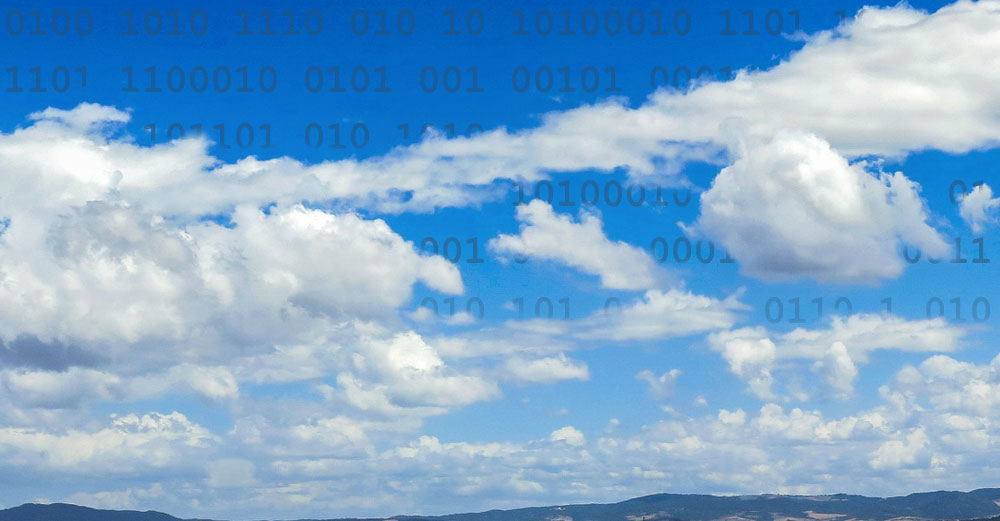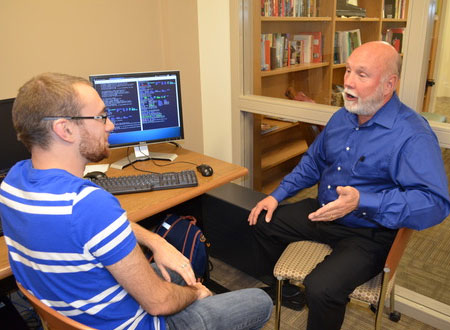
What is this cloud? Will my data rain back down one day? (Maybe).
The “cloud” is how we describe the powerful network that allows for massive storage space and connects all of our devices together. There seems to be a cloak of mystery surrounding what it actually is, and how it functions. With increased use of smart phones and tablets with cloud capabilities and the recent hacking of iCloud and Dropbox, the cloud has been gaining a lot of attention. Sure we’ve heard of it, and a lot of us use it, but do we truly understand it?
Expert Response
 Name: Bill Williams
Name: Bill Williams
Capacity: Assistant Professor
Campus: SUNY Delhi
Q:What is the “cloud” and how does it work?
A: When we talk about the cloud, we are using a network, that is, a system that can transfer information from one computer to another.
Assistant Professor Williams explains:
The bits of information are turned into electrical signals that travel over a wire, pulses of light over fiber optic cable, or radio waves over a wireless connection. When they are received on the other end, they are turned back into bytes of computer data. There are many technologies involved in making this “magically” happen – although in some ways it is analogous to cars travelling on different roads or letters sent through the postal system.
The “super highway” is, of course, the Internet. The Internet connects most of the networks in the world. To draw a picture of the Internet is impossibly complicated, so it is depicted as a cloud. You connect to one “end” of the Internet, into the cloud, and you access a server on “the other end.”
How does the data get from one end to the other? Data packets have destination addresses, something like a phone number, and get “routed” from network to network to reach their destination. The packets also have the originating or source address and so a “conversation” of sorts – an exchange of data packets following particular rules (protocols) – ensures that the data is reliably received. Servers provide “services” to “clients” that make a request. (“Waiter, I would like a juicy steak, please.”) The servers return the requested resource, such as a Web page, a file or email.
By using cloud services, the capabilities of a PC or a smart phone are greatly extended. What would we do without the Web? All the information would need to be stored on our device. Services go beyond retrieval of data. We can use the cloud for computation. For example, when we play a game on our tablet or even a smart TV, there may be a computer in the cloud that is actually running the application and sending updates to our screen. In this way, our devices become much more powerful.
“Social networking” has changed our lives by sharing information on the cloud. Every day new “apps” are developed, leveraging the cloud. There are certainly security concerns. What information about ourselves are we making available? Are cloud systems secure? Cloud vendors place a major focus on security issues, but many incidents have shown there is no guarantee. Businesses are taking advantage of the cloud by connecting with their customers (and tracking their usage, as well). You cannot assume that anything you do on the cloud is completely private.
So now we know, the cloud enables us to utilize our electronic devices in ways that weren’t possible before. But with these new advances in cloud technology it is also best to remember that what goes into the cloud essentially might no longer be fully private. We must be especially careful with our sharing of information and data to ensure that we are protected and secure with all our online activities.




As a matter of fact, the term “cloud” is just cool catch-phrase used in marketing, and has very little scientific value. Just my opinion, though. 😉